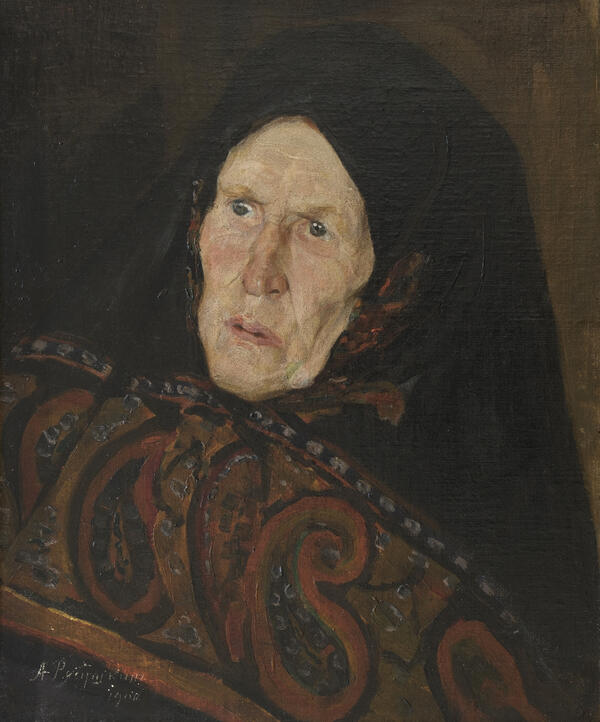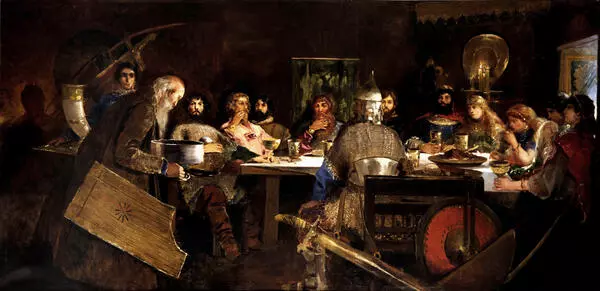Andrey Petrovich Ryabushkin was a painter, specializing in history and genre paintings. He was born in 1861. His father and elder brother were icon painters. Ryabushkin studied at the Moscow School of Painting, Sculpture and Architecture and the Saint Petersburg Academy of Arts. He participated in exhibitions organized by the Society of Travelling Art Exhibitions and traveled extensively through Russia.
Ryabushkin’s small study “Yard of the Tyumenev Estate (Privolye)” depicts a place closely connected with his life. The Privolye estate belonged to Ilya Fyodorovich Tyumenyev — an artist, musician, guardian, mentor and friend of Ryabushkin. Tyumenev studied music theory under Nikolai Rimsky-Korsakov and wrote the libretto for his opera “The Tsar’s Bride”.
Andrey Ryabushkin met Ilya Tyumenyev while studying at the Academy of Arts. After Ryabushkin died in 1904, Tyumenyev wrote an article about his friend titled “A Talent Extinguished Too Soon”.
The Privolye estate with the master’s house, stables, arbors, a theater on a terrace, and log buildings harmoniously melded with the surrounding nature. It was one of the centers of culture and art, located on the outskirts of Saint Petersburg, and was a gathering place for a group of like-minded artists who studied Russian culture. Among them were Abram Yefimovich Arkhipov, Sergey Vasilyevich Ivanov, Dmitry Alexandrovich Toporkov and others. They were interested in Russian antiques and folk art, sometimes in summer they traveled around Russia for a few weeks and painted the monuments of Old Russian architecture. As Tyumenyev wrote, they did this to “discover and capture almost photographically, for themselves and generations to come, the Russia that we lost, the Russia we are looking for and cannot find…”
Living mostly in the village near the estate and working mainly on history paintings, Ryabushkin created finished studies and sketches, which proved useful in his later works.
The study “Yard of the Tyumenev Estate (Privolye)” is perceived as a lyrical rural landscape, continuing the line of mood landscapes, where the poetic perception of a traditional Russian village outweighs any social assessment. The composition and arrangement of the study resemble the artist’s famous history paintings: the depth of space is emphasized by the image of a wall on the right, the foreground is rather empty on the left and in the center, the middle ground is more detailed, and the background shows some scenery.






